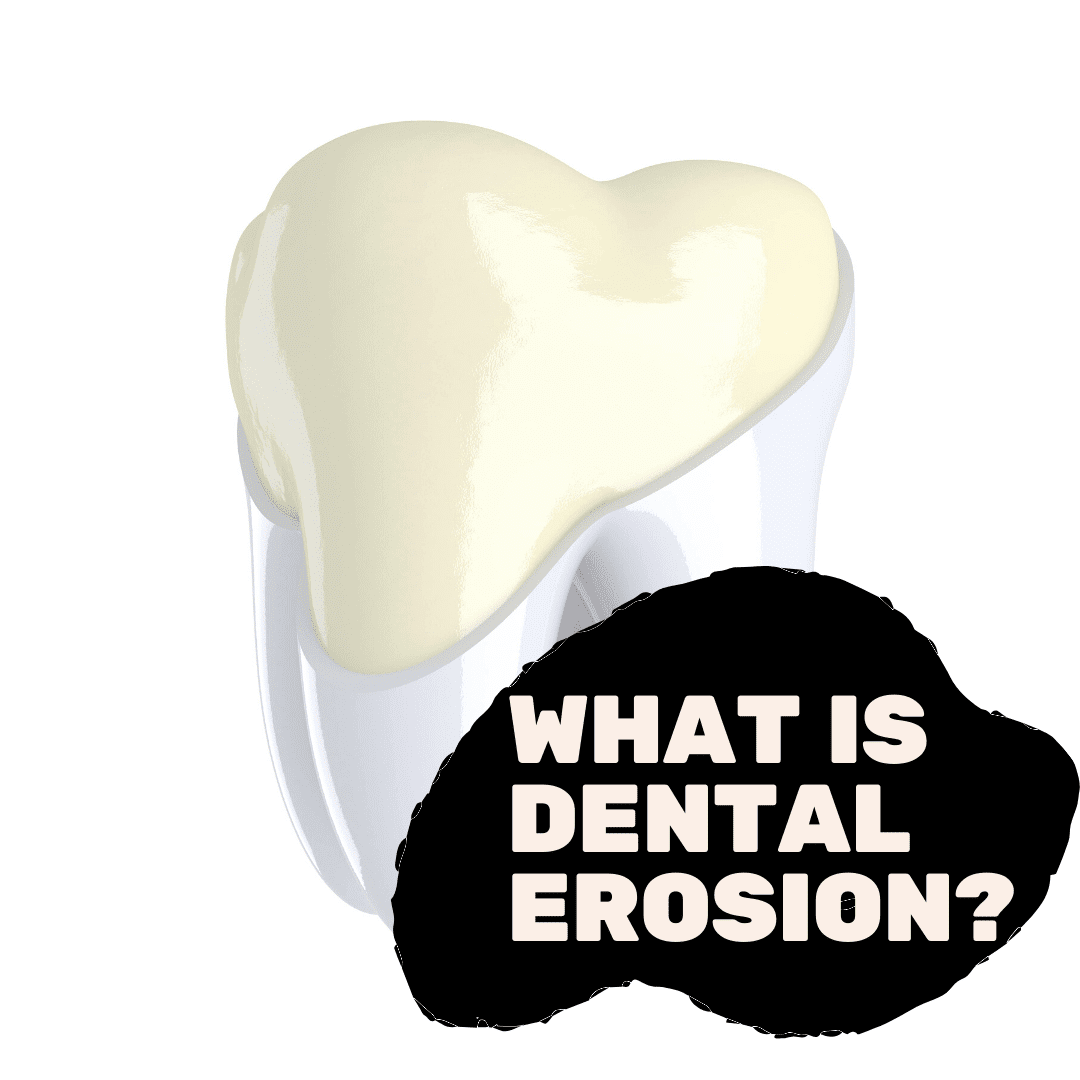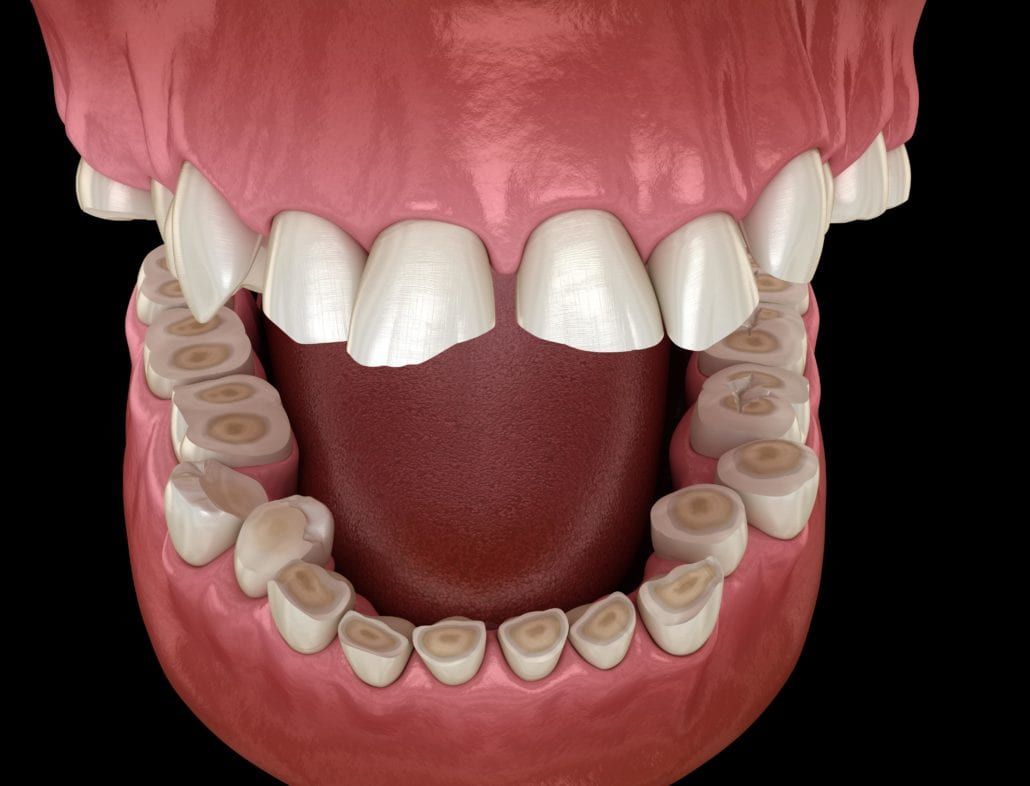What is Dental Erosion?

While many people may be somewhat familiar with dental cavities and gum disease, not as many people know about dental erosion. Even though tooth decay and gum disease are the two most common threats to your oral health, dental erosion is another problem that can negatively affect your oral health. To understand why this is, let’s first take a look at the structure of the tooth.
The outermost layer of the teeth is known as the enamel, the middle layer is known as the dentin, and the innermost layer is known as the pulp. Since the pulp contains blood vessels and nerves, it is very soft and relies on the dentin and enamel layers for protection. Out of these two layers, the enamel is the strongest layer of the tooth, as well as the strongest substance in the entire human body.
This is because it is composed of hydroxyapatite, or crystalline calcium phosphate. The crystallized arrangement of calcium and phosphorus molecules provide tooth enamel with its strength. However, this structure can also be responsible for the loss of dental enamel through a process called demineralization.
Demineralization occurs when excess amounts of bacteria build up on the surface of the teeth and expel acidic waste products that cause the minerals to break down. This ultimately results in tooth decay, and possible gum disease if it occurs along the gum line. However, enamel can also break down for other reasons.
Cases where enamel wears down without being caused by bacteria are called dental erosion. Even though bacteria is not at fault, symptoms of enamel erosion are similar to those of tooth decay and can include: tooth sensitivity, indentations on the enamel, teeth that damage easily, and discoloration. Also like tooth decay, enamel erosion may not cause symptoms until it has progressed significantly. This is why dental checkups are so important because they can catch the earliest signs of possible erosion.
Dental erosion can have various causes including:
Stomach Acid
While stomach acid is wonderful for breaking down food and is an essential part of our digestive system, it causes serious issues in other parts of the body when it leaves the stomach. This most commonly occurs as a result of acid reflux disorder or when vomiting. Not only does stomach acid damage the esophageal lining, but it also increases the amount of acid in the mouth, which causes the enamel to erode.

Diet
Acids can also be found in the foods and beverages we consume. Certain foods and beverages contain more acids than others, meaning that their quantity should be managed to avoid the intake of too much acid. Some common examples are citrus, apples, rhubarb, berries, and sodas that contain citric or phosphoric acid.
Dry Mouth
Saliva is our body’s way of managing the acid concentration of the mouth. Normal saliva production helps regulate acid concentration to an ideal level. However people with a lack of saliva, or dry mouth, do not have the same protection and their teeth are often exposed to higher concentrations of acid. Although some cases of dry mouth can be improved, other cases are caused by medical conditions or are side effects from medications.

Bruxism
Teeth grinding and clenching are two behaviors that make up bruxism. Bruxism is usually an unconscious behavior that happens while sleeping, so you may not even be aware that you do it. Nevertheless, bruxism can be extremely damaging to tooth enamel because it exposes the teeth to constant, excessive force. Overtime, this inevitably causes the enamel to break down and become more easily damaged.
As you can see, dental erosion is another unfortunate dental problem that can damage your teeth. Even with enamel being the strongest substance in the body, it can still be eroded by stomach acid, diet, dry mouth, and bruxism. However, the good news is that dental erosion can be prevented or slowed down by attending regular dental appointments so your dentist can examine your teeth and provide guidance.

Dr. Lila Nabi earned her Doctor of Medical Dentistry (DMD) at the University of British Columbia and is a member of the following dental organizations: AACA, CACD, BCDA, CDA, BCDS, and KIA. She has completed extensive continuing education courses at the world renowned Kois Centre in Seattle, Washington, Oral Surgery Externship program at Loma Linda University, LA. She has also participated in over 200 hours of continuing education at the Spear Centre in Phoenix, Arizona led by Dr. Frank Spear. Dr. Nabi is active in an ongoing Implantology Study club in Vancouver.











